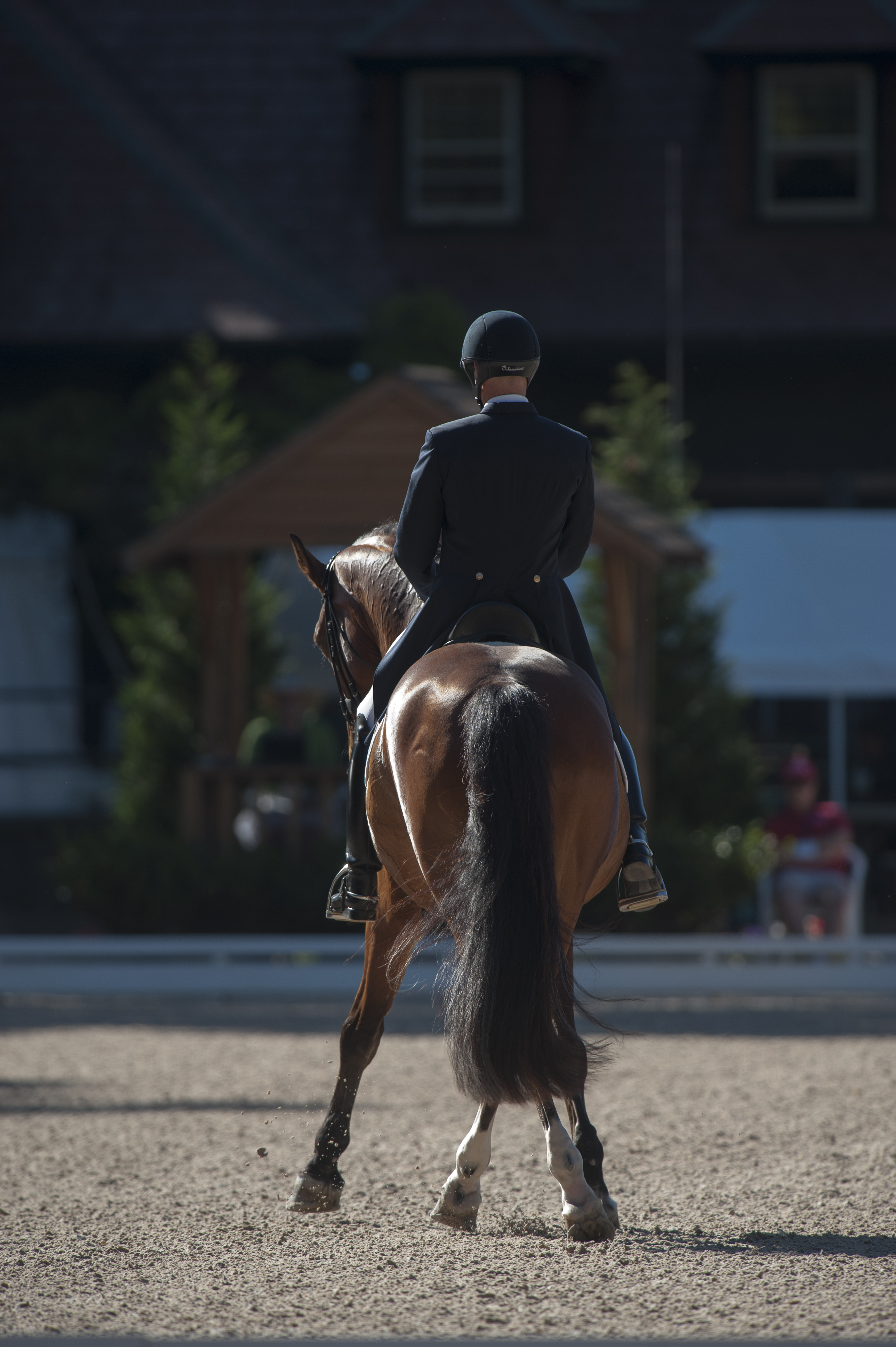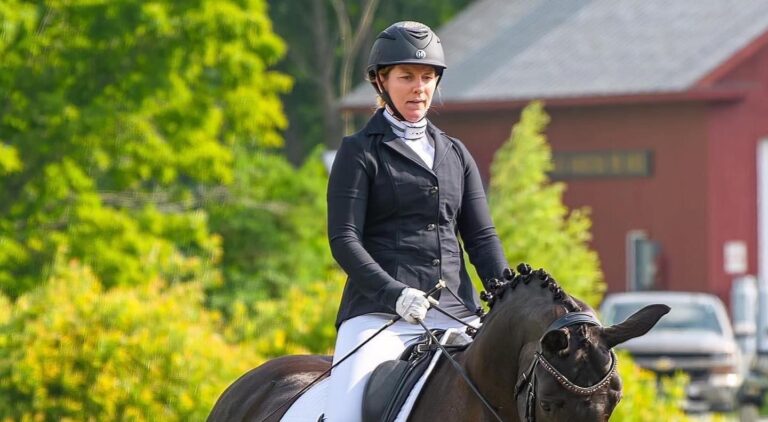Q: When half passing to the right, my horse loses his bend. I am finding it impossible to move sideways while keeping him bent. Most of the time, I feel our half pass turns into some sort of leg yield. How can I go into the half pass without losing the bend? —Heather Vincent of Saint Paul, Minnesota
A: This is quite a common problem and usually stems from the rider trying to sustain the half pass at all costs. Remember that you need to be able to move your horse around in whatever manner is necessary. As with anything else in dressage, developing a correct half pass is all about preparation. Think of it as a recipe for success. If you leave something out, your final product will be lacking.
Your horse needs to:
1. Be in a correct, weight-bearing balance
2. Be in front of the leg
3. Accept the half halt
4. Be flexible, movable and rideable. Additionally, you need to have an awareness of the position of your horse’s nose, neck, shoulders and haunches and the ability to ride the forehand onto any line anywhere.

Because half pass is really haunches-in (travers) on the diagonal line, the solution to your problem may be less difficult than you imagine. I find that most horses prefer to put as much weight on their forehands as possible when asked to do haunches-in. Be sure that your horse is willing and able to take the weight behind.
Practice the haunches-in until it feels easy and readily carried forward. Experiment with bigger and smaller steps. Ride it in canter as well as trot. Remember not to ride the movement as one long, drawn-out run-on sentence, but rather as a creative process in which each step becomes part of the whole. Each step must have its own intrinsic value. Once you have developed this ability, you can proceed to the following exercise.
Use a line of poles on the diagonal to serve as an outside wall and to encourage you to maintain the proper line of travel. Ride your horse straight on the diagonal lines of the arena (M–K or K–M and H–F or F–H) in the walk. Pay attention to the position of his nose, neck and shoulders. If your horse wobbles off the line, ride it more forward. Do not correct the haunches by pushing them from side to side. Instead, ride the shoulders in front of the haunches. When you are able to ride your lines accurately and with a nice uphill balance, try it in the trot and canter. As this becomes more second nature, with your horse staying between your leg and your hand, you should be able to hold the lines with ease.
Now it is time to add position. This means that you will ride your horse’s nose, neck and shoulders between your two reins, but will be easily able to add flexion in either direction, like a barely discernible shoulder-fore. Once you are able to do this while maintaining the same balance and the diagonal line, ask your horse to bend around your inside leg and displace the quarters to the right or left. If your horse falls off the line, correct with your inside leg and ride forward. Do not hold up your horse with your inside hand; it is used for flexion or turning. Your outside hand controls the speed and the length of your horse. Give, keep or take with your outside hand as needed to permit more, maintain or diminish the amount of flexion.
Once your horse begins to understand how he can stay up and in balance, he will find it much easier to perform the haunches-in on the diagonal. As you become more comfortable with this, you can increase the flexion and ask for more bend in the rib cage. If your horse is not responsive to the request to displace the haunches, take the time to teach him to react to a light touch of your leg. This may require some not-so-light touches of your leg followed by the reward of no leg. If you think of the aid as meaning “move” and a lack of it as meaning “keep moving or I will touch you again,” your expectations will change and so will your horse’s reactions. In any case, your ultimate goal is for your horse to move away from the pressure when you touch him with your leg behind the girth.
If your horse becomes too long on the outside, change the flexion and leg yield for a few steps before returning to the half pass. Making a volte in the opposite direction can also help to restore the carriage and shorten the outside of the horse. Use these exercises whenever your half pass begins to feel labored. Remember that your horse is supposed to carry you through this and that you may make alterations and adjustments as you feel the need. Training isn’t a horse show. The only time you should ride as though it is, is when you do a run-through of a test.
To reiterate, a successful half pass, or any other movement, for that matter, is only the sum of its parts. The parts in this case are uphill balance, bending around and moving forward from the inside leg with haunches displaced from the outside leg. Those parts need to be flexible, useful and easy for you to adjust. When you have all the aforementioned components at your disposal, point your horse’s nose at whatever letter your level of competition dictates and half pass away.

Madeleine Austin has been training dressage horses to Grand Prix for 30 years and has competed in numerous national championships at all levels. A breeder of Dutch Warmbloods, she produced the Grand Prix stallion Olivier, who was U.S. Dressage Federation (USDF) Horse of the Year in 2008 at Intermediaire II and who now competes internationally with her daughter, Elisabeth. Austin is based in Williston, Vermont (imajica.net).











